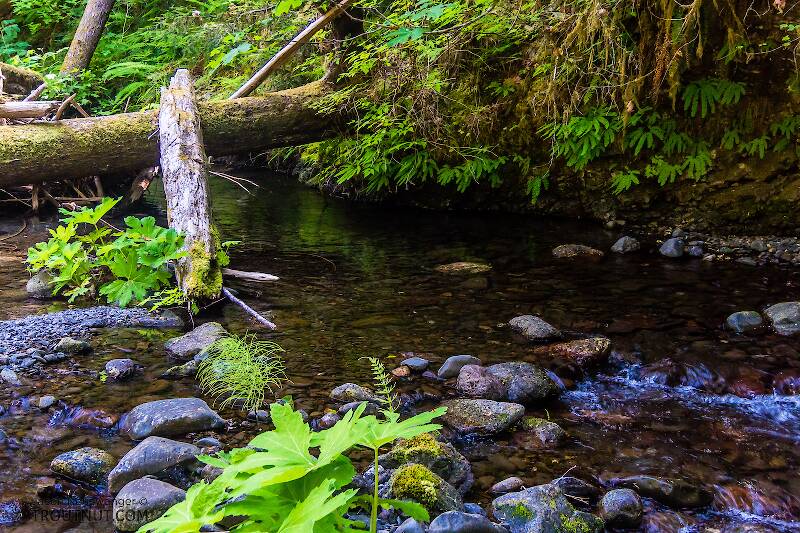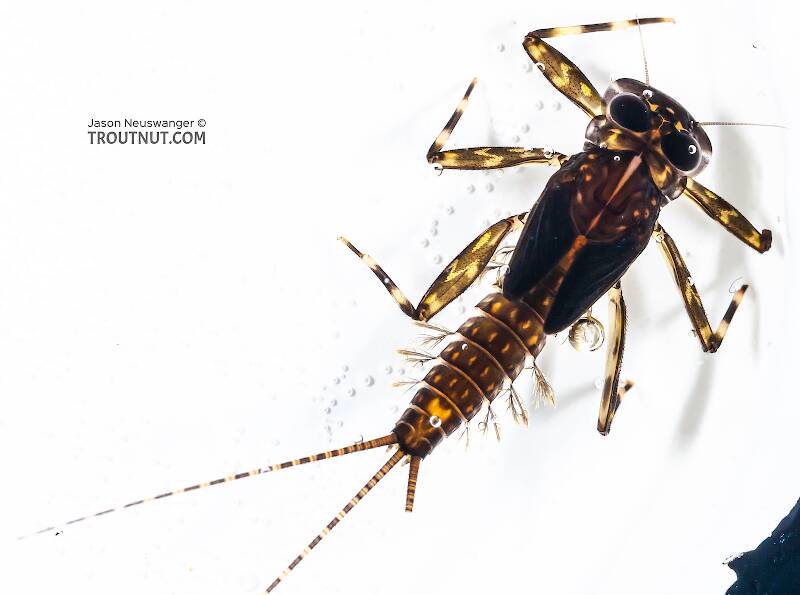
Salmonflies
Pteronarcys californica
The giant Salmonflies of the Western mountains are legendary for their proclivity to elicit consistent dry-fly action and ferocious strikes.


Mayfly Species Heptagenia elegantula (Pale Evening Duns)
Where & when
The hatch dates given for Heptagenia elegantula in Selective Trout are August 5th to September 25th. This conflicts with the June and July dates claimed by two other authors.In 36 records from GBIF, adults of this species have mostly been collected during June (36%), July (33%), August (19%), and May (6%).
In 78 records from GBIF, this species has been collected at elevations ranging from 502 to 11001 ft, with an average (median) of 4905 ft.
Species Range
Hatching behavior
According to Fred Arbona in Mayflies, the Angler, and the Trout, the duns of this species emerge and fly off the water so quickly that they aren't important to imitate.Spinner behavior
Spinner falls give the best fishing offered by elegantla. They follow the typical Heptagenia spinner behavior.Nymph biology
Current speed: Slow to moderate
Substrate: Fine gravel, maybe sand or silt
Physical description
Most physical descriptions on Troutnut are direct or slightly edited quotes from the original scientific sources describing or updating the species, although there may be errors in copying them to this website. Such descriptions aren't always definitive, because species often turn out to be more variable than the original describers observed. In some cases, only a single specimen was described! However, they are useful starting points.
Male Spinner
Wing length: 9-12 mm
A yellowish species; reddish brown dorsal stripe on mesonotum, black markings on pleura above coxae; genitalia as in fig. 94.
Head pale yellowish; a reddish spot on frontal carina, and red shading on vertex between eyes and ocelli. Thoracic notum pale yellowish; a median reddish brown stripe on mesonotum, and pinkish area anterior to scutellum. Pleura and sternum likewise yellowish; pinkish areas on pleura below base of each wing; a black streak above base of middle and hind coxae, and a black spot posterior to hind coxae. Fore leg light bronzy brown; femur indistinctly banded at middle with light reddish brown, red-brown also at apex; apex of tibia, distal tarsal joint and tarsal joinings, also claws, dull reddish to blackish brown. Middle and hind legs yellowish amber; no median femoral band; tip of tibia not darkened. Basal joint of fore tarsus about 1/6 the length of the second joint. Wings hyaline. Costal margin of fore wing may be tinged with pale lemon yellow, with greenish or bistre-grey. Subcosta and radius yellowish amber in basal half; other longitudinal veins fine, pitch brown to black. Humeral cross veins thickened posteriorly, blackish. Cross veins dark; those in costal space thicker than others, black; a well-marked black bulla.
Abdominal segments pale; 2-7 semi-hyaline, 8-10 opaque. Posterior margins of tergites 2-7 smoky greyish or brownish; tergites 8-10 tinged with pink. Sternites pale yellowish. Tails pale yellowish, joinings dark brown. Genitalia distinctive.
Specimens of the Mayfly Species Heptagenia elegantula
1 Nymph
Start a Discussion of Heptagenia elegantula
References
- Arbona, Fred Jr. 1989. Mayflies, the Angler, and the Trout. Nick Lyons Books.
- Caucci, Al and Nastasi, Bob. 2004. Hatches II. The Lyons Press.
- Knopp, Malcolm and Robert Cormier. 1997. Mayflies: An Angler's Study of Trout Water Ephemeroptera . The Lyons Press.
- Needham, James G., Jay R. Traver, and Yin-Chi Hsu. 1935. The Biology of Mayflies. Comstock Publishing Company, Inc.
- Schwiebert, Ernest G. 1955. Matching the Hatch. MacMillan Publishing Company.
- Swisher, Doug and Carl Richards. 2000. Selective Trout. The Lyons Press.
Mayfly Species Heptagenia elegantula (Pale Evening Duns)
Species Range
Resources
- NatureServe
- Integrated Taxonomic Information System
- Global Biodiversity Information Facility
- Described by Eaton (1885)


